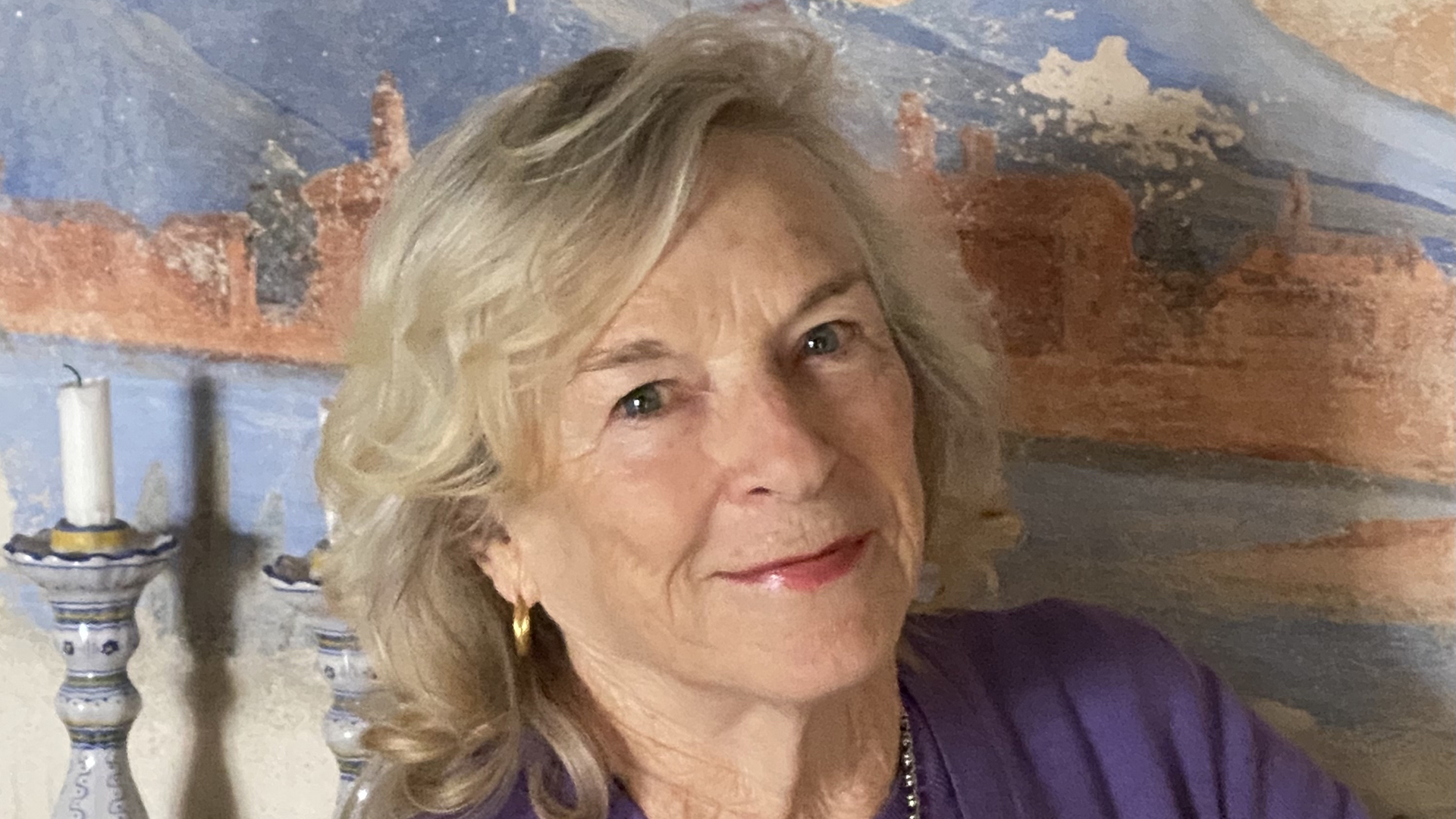BBC – Travel – Frances Mayes on the enduring allure of Italy
In the last 24 years, no other writer has likely lured more travellers to Italy than Frances Mayes. Her 1996 memoir Under the Tuscan Sun tells the story of how she fell in love with a rundown 200-year-old villa outside Cortona, and how she painstakingly restored it alongside her Italian neighbours. The book remained on the New York Times bestseller list for two and a half years, was made into a feature film starring Diane Lane and has led Mayes to write a series of subsequent love letters to Italy that have inspired many of her readers to dream of relocating to the bel paese.
50 Reasons to Love the World – 2021
50 Reasons to Love the World – 2021

“Because I had the unexpected joy of two days in Rome in December. Instead of jammed sidewalks, careening cars and buses erupting with tourists, the city was shining, quiet, utterly clean. I had many streets and piazzas to myself. I could smell the sea air. I simply walked all over, taking in the essential city. Imagine – I stood alone at the Trevi fountain, listening to the water splash. Among many travel highs in my life, I’ve never felt as astonished and lucky.” – Frances Mayes, author
For Mayes’ latest project, Always Italy that I co-authored, she and I spent nearly two years zigzagging across every Italian region only to find that many years after we both relocated here, there was still so much to discover about our adopted homeland. The book came out this past spring when the country was in lockdown as the global epicentre of the coronavirus pandemic. While the timing might have seemed unfortunate at first, the book is an opportunity to show solidarity for Mayes’ beloved Italy and its 20 diverse and uniquely beautiful regions.
I recently caught up with Mayes to delve deeper into her love of Italy and to ask her advice about unlocking meaningful travel experiences that forge connections with people of other cultures.
Q: You’ve written that you’re profoundly in love with Italy. What inspired that love and what fuels it today?
From the first trip until the last one, I experienced exactly the same sensations – the feeling of being at home. Who can explain how you can sense a metabolic connection with a foreign place, when you have no genes, no ties? Colpo di fulmine – “love at first sight”. I travelled to Italy originally to see the art and architecture. I live there now half of the year for about 1,000 reasons, but the most profound: I open the door and say aloud, “I’m home”.
Q: You recently travelled across the entire of Italy for the first time. What surprised you most about the experience?
Over several decades I’ve travelled extensively, but I’ve returned to favourites (Piemonte, Veneto and Le Marche) many times while neglecting whole regions such as Calabria, Molise, Valle d’Aosta. Writing See You in the Piazza: New Places to Discover in Italy in 2018 sparked my desire to see every region. I was travelling to rediscover the spontaneity of travel through visiting little-known towns. I thought, one day in the exquisite [town of] Troia in Puglia, “Why not keep going? See it all.”
What always will surprise me is the astonishing diversity of Italy
What always will surprise me is the astonishing diversity of Italy. Each region [is] so unique. You can’t get to the bottom of Italy, though after four years of intense travel all over, I can say I begin to know it a little.
Q: You’ve written extensively about some of Italy’s most stunning locations. Why is it important to preserve and protect these places for future generations?
Venice, for example? Most evocative and romantic place on Earth? I would like to think our great-grandchildren will go on a midnight gondola ride, ribbons of light on the water, only the sound of the oar knocking, and look up into the windows of grand palazzi with frescoed ceilings, huge chandeliers’ armfuls of light. They’ll read about how this enchanted city rose from swampy sandbars and the early inhabitants laid black-and-white mosaics that still stun the viewer. This, times a million other life-altering moments travel can offer. Our landmarks and natural resources are the gifts we’re given to pass on.
You may also be interested in:
• The surprising origin of Italy’s creamy cheese
• The private language of Venice
• Florence’s wine portals from the 17th Century
Q: Like many popular destinations, your adopted home region of Tuscany is grappling with the effects of over-tourism. How have you seen the influx of travellers change Tuscany in recent years, and what are some ways that governments and travellers can help alleviate this trend?
Tuscany must grapple only in high season. The rest of the year, November through April, towns revert to “the way it used to be”. In my adopted town of Cortona, shop owners, restaurants, hotels and other businesses lament the slow weeks of winter, pronouncing them dull. After the winter holidays, most pull down those metal doors for a shutdown, a good time to make repairs and repaint. Everyone looks forward to spring when visitors return like the rondine (swallows). June and July are primo tourist months, while May, September and October are lively but not generally overcrowded – except sometimes in cities.
Some people only can travel in prime time, but travellers who can might choose early spring or late fall. Go to Rome, Florence, Venice if you haven’t, but save some of the trip for the road less travelled. I arrived in magnificent Torino and said, “Where is everybody?”.
[When researching the book, you] and I revelled in the cities that often are skipped: Genoa, Catania, Palermo, Trieste, Cagliari, Siracusa, Treviso, Trento. In these, you feel experience becoming more intimate and exciting. When coming upon Orsara, a village in Puglia, where you sit down to lunch in a forno (bakery) where they’ve made bread since the 1500s; or you’re hiking across a broad meadow in Cogne, Valle d’Aosta, with the sunset catching snow-capped mountains; or you find yourself lying down in a poppy field outside Montepulciano, you’re there, exactly where you want to be. Those off-track places put you close to that essential question, why travel?
I revelled in the cities that often are skipped: Genoa, Catania, Palermo, Trieste, Cagliari, Siracusa, Treviso, Trento
As for governmental regulations, certain places will need to set limits. One thing the pandemic has shown, the Earth recovers quickly from its human overloads. Maybe we can use this knowledge going forward. Limiting bus entries, closing centres to traffic, limiting flights in, limiting dock space. Mass tourism is ugly and will take some brave manoeuvres to control it in some of the world’s most desirable spots.
Q: What are some of your best tips to unlock meaningful travel experiences that create connections with people of other cultures, foster greater understanding and build empathy?
Planning a trip is half the fun. I like to read the writers from the place I’m planning to visit. You start from a good perspective in, say, Sicily if you’ve read The Leopard by Lampedusa and the novels and stories of Leonardo Sciascia. In Always Italy, we wanted to establish a cultural context in each region, by books, films, architecture, history, archaeology and art. Such good prep widens the aperture and makes you ready to meet the people who’ve been shaped by the place. Once there, Italy is the best for making contact with residents. The people have an inherent humanism unlike any other place I’ve travelled.
Go to a bar in Naples three days in a row and the barista knows what you want without asking. Even if you’re reserved, it’s natural to chat with the person also buying wine or artichokes. Ask the waiter where she’s from. Ask to meet the chef. Visit the mozzarella maker, the focaccia baker. Take a few language lessons even if you’re in town only a few days. Join a cooking class with a local. Get a haircut. Ask directions, even in the age of GPS. Attend church services or concerts. Sit in the piazza on market day. If you’re with a group, break away or get up early and see the town wake up. Above all, make eye contact. Where you’re from, you might not have that habit, but it’s a given in Italy.
Q: You famously took a risk in buying an abandoned villa in Tuscany. When is it important to stick to a plan while travelling, and when is it important to open yourself up to unexpected experiences?
I rented houses all over Tuscany for five summers before I bought my house. In the film Under the Tuscan Sun, Frances bought on a whim, but real Frances did not. But, yes, still a risk because I was a recently divorced university professor with limited funds, and back then (1990) buying foreign property seemed like signing up for moon travel.
I think taking that risk enabled me later to take other risks, such as quitting my job on the basis of two successful books when I had no idea if writing would work out. Although I love to plan trips and I like to have reservations, I’m all for going off-course when a waterfall, a hidden Romanesque church, a clear cove, a winemaker or a festival beckon.
Q: What are some of the places and experiences you’ve loved most in your Italian travels?
Seeing the two bronze warriors in the museum in Reggio di Calabria; dining on New Year’s Eve at La Subida in Cormons, Friuli; taking my small grandson on a fountain quest in Rome; standing under the Pantheon oculus when snow fell; lying in a field of wildflowers one starry night near Trento; hiking to green lakes in the Dolomiti; walking along the Arno at dawn with a warm brioche; plying the Venetian lagoon’s watery world of islands; joining the evening stroll along the waterfront in Carloforte, Sardinia; harvesting our olives every October; setting the table under the trees for a long dinner; finding a treasure at the antique market in Arezzo; seeing the stupendous Greek ruins in Sicily and Paestum; finding myself almost alone in the Uffizi one January afternoon; discovering the purgatory chapels in Puglia; coming upon the jewel box Baroque town of Scicli in the south of Sicily.
Endless, yes, Italy is endless.
BBC Travel celebrates 50 Reasons to Love the World in 2021, through the inspiration of well-known voices as well as unsung heroes in local communities around the globe.
—
Join more than three million BBC Travel fans by liking us on Facebook, or follow us on Twitter and Instagram.
If you liked this story, sign up for the weekly bbc.com features newsletter called “The Essential List”. A handpicked selection of stories from BBC Future, Culture, Worklife and Travel, delivered to your inbox every Friday.
www.bbc.com 2021-02-19 14:47:24



